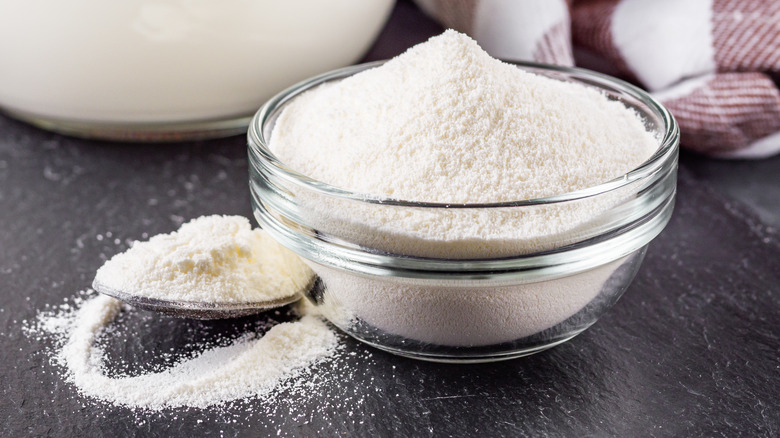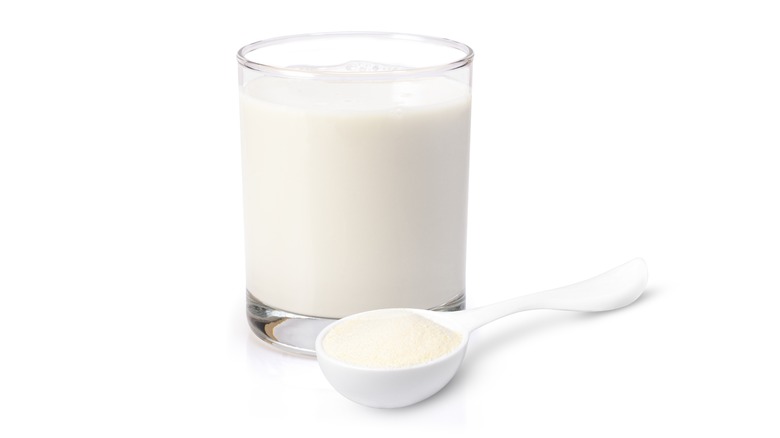Why You Should Use Milk Powder When Baking
Perusing the milk aisle while grocery shopping is merely an afterthought for many people. Some grab a gallon of whole milk and go about their day, while others may contemplate between chocolate or strawberry varieties. And we'll bet very few people skip the refrigerated section entirely and make a beeline for milk powder — but for bakers, this may be a mistake.
At its core, milk powder is milk with all the liquid evaporated out, per Baking Bites, which gives it a much longer shelf life than your standard gallon and allows it to be kept at room temperature. A cream-colored powder, the ingredient can be mixed with water to turn back into liquid milk (one cup of water usually requires ⅓ cup of milk powder, but be sure to read those directions first) or used in its dry form. Livestrong shares the stuff is also packed with vitamins and minerals, helping you beef up the nutritional content of whatever recipe you make with it.
But perhaps one of the best things about milk powder is how it can be easily used to transform baked goods without radically changing the recipe. (If you're an experienced baker, you know how unexpectedly difficult additions and substitutions can actually be.)
Use milk powder to enhance flavor and texture
Why incorporate more liquid into your batter or dough when you can use dried milk powder instead? Epicurious states that the ingredient offers baked goods a number of benefits, from an amped-up flavor to improved texture.
Cookbook author Ramin Ganeshram told the outlet they use milk powder to achieve tender flatbreads, chewy cookies, and sky-high bread. Chef Christina Tosi calls the ingredient her "secret weapon," praising its ability to enhance flavors and textures. Tosi goes on to state that, in addition to baked goods, milk powder can be added to your ice cream recipe to make it "milkier, denser, [and] silkier" and used to boost the flavor of chocolate. Milk powder is also a great swap for traditional khoya in gulab jamun, which are fried dough balls covered in a sweet syrup (via Serious Eats). If regular milk was used, cookbook author Meera Sodha tells Epicurious the dough would be too wet to create the desired texture.
So in short, milk powder yields golden-brown crusts, tender textures, and heightened flavors when added to baked goods (via Nevada Dairy Farmers). Simply mix a little into your dry ingredients or reconstitute the milk powder if you'd prefer to use it in its liquid form. To use milk powder instead of regular milk in recipes, Cooking Light suggests reading the directions on the box of powdered milk for the most accurate ratios.

